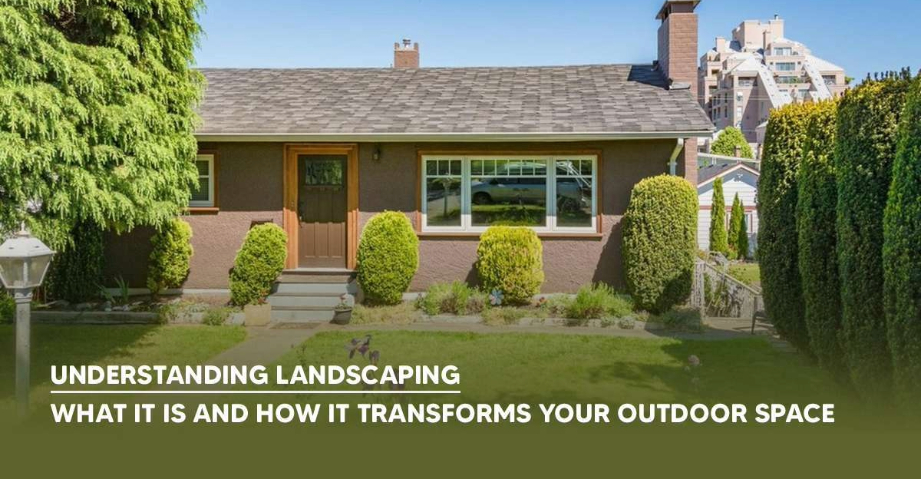
6 Reasons for Going with Jim’s Mowing Franchise
March 26, 2018
10 Creative Backyard Garden Ideas to Transform Your Outdoor Space
July 5, 2024Understanding Landscaping: What It Is and How It Transforms Your Outdoor Space

Finding out what landscaping is and its role in enjoying outdoor space. Check out many easy-to-do things and unconventional ways to create a comfortable environment with our experts at Jim’s Mowing Melbourne West. This is ideal for homeowners seeking to brighten up the scenery of their exterior.
What is Landscaping?
Landscaping relates to changing and improving the existing land through its plant life, terrain, and structures. It covers all the facets, such as design, planning, and maintenance of public spaces, to make them aesthetically attractive and efficient.
What are different types of landscaping?
Landscaping is a general term referring to various techniques and styles used to improve the beauty and usability of outdoor areas.
1. Residential Landscaping: This work strives to improve the aesthetic appeal of surrounding houses, from lawns and frontages to footpaths. It frequently includes planting bushes, trees, and flowers and installing lawn and landscape accessories.
2. Commercial Landscaping: This aspect is for businesses and contains a large-scale plan and process. The signage it depicts is intended to create a more welcoming exterior, working for the brand identity and attracting clients.
3. Hardscaping: These denote the landscape’s non-green elements, which may include a rock monument, concrete walkways, or wooden decks. Hardscaping is one of the best ways of defining and giving an order in the landscaping design.
4. Softscaping: The flipside of this is green landscaping, which involves planting trees, bushes, flowers, and grass. It’s all about living in a green, vital landscape.
5. Xeriscaping: Designed to conserve water, xeriscaping embraces drought-tolerant plants and requires minimal or no irrigation. This family has particular applications in dry areas.
6. Sustainable Landscaping: This company’s mission is to develop an aesthetically appealing design that is environmentally friendly. It could use native plants, rain gardens, and other sustainable materials for this.
Important Landscaping Terms
Hardscape refers to the non-living components of landscaping, which include buildings, walls, and pathways.
Softscape: The active ingredients like earth, green trees, and flowers.
Mulch: Material spread over the soil to retain moisture and suppress weeds.
Benefits of Landscaping
Landscaping has been proven to have numerous advantages that can improve both private and commercial properties.
1. Aesthetic Appeal: Proper landscaping improves the area’s visual appeal and makes it appealing and welcoming. This includes the use of plants, trees, shrubs, and lawns to fashion a splendid place.
2. Increases Property Value: Well-kept open spaces can add curb appeal to a property and make it more desirable for future buyers and tenants.
3. Environmental Benefits:
- Air Quality Improvement: Plants trap pollutants and dust from the air, enhancing the air quality.
- Temperature Control: Trees and plants shade the area, cooling the air in summer and thus decreasing the necessity for air conditioning.
4. Health Benefits:
- Mental Health Improvement: Green areas can reduce stress and increase mental health.
- Physical Activity: Gardening and landscape-related activities can be a great way to exercise.
5. Functional Benefits:
- Erosion Control: Appropriate use of landscaping reduces soil erosion, most notably on sloped lands.
- Water Management: Creative arrangement of plants and good landscape design can be used to solve the problem of stormwater runoff and decrease the amount of flooding.
6. Social Benefits: Landscaping areas can create possibilities for community-based activities and social interactions and strengthen community ties.
7. Economic Efficiency: In the business district, a nicely landscaped space could attract more customers and be a possible source of income.
Multiple Landscaping Services
Landscaping covers many roles aimed at keeping green spaces beautiful and healthy.
1. Lawn Mowing:
- Service Description: Lawn Mowing the grass regularly so that the lawn surface is even and green.
- Benefits: Encourages plant growth, keeps insects away, and makes everything look tidy.
- Frequency: Usually done weekly or bi-weekly while considering growth rate and seasons.
2. Gardening Services:
- Service Description: Consists of sowing, including planting, weeding, mulching, and general garden maintenance.
- Benefits: Maintain fresh look gardens, better pimproveealth, and significant aesthetics.
- Tasks: Can offer seasonal planting tips and give directions on plant choices.
3. Hedging & Pruning:
- Service Description: We cut and organise hedges, bushes, and trees to maintain healthy vegetation and the preferred aesthetics.
- Benefits: Prevents overgrowth by cutting back, removing dead or sickly branches, and enhancing flowering and fruiting.
- Tools Used: Shears, pruners, and sometimes motor tools to handle more enormous hedges.
4. Lawn Care:
- Service Description: Mowing is more than just mowing; it also includes aeration, seeding, fertilising, and pest control.
- Benefits: Provides vibrant turf that is free of weeds and insects.
- Considerations: Adapted to the species of grasses and local weather conditions.
5. Garden Landscaping:
- Service Description: Involves planning and reworking of garden Landscaping spaces in which paths, water features, and terraces may be installed.
- Benefits: This can entirely alter the look and usability of a backyard, resulting in higher home value.
- Process: Generally, landscape projects start with a planning and design phase, followed by a landscaping construction phase.
6. Rubbish Removal:
- Service Description: Disposal of garden waste and other outdoor rubbish.
- Benefits: Cuts down on trash and rubbish removal, stopping pests from invading the property.
- Everyday Items Removed: Leaves, branches, grass clippings, and old outdoor furniture.
Things to Keep in Mind Before Starting Landscaping
Budget: Understand how much you can spend and remember that high-quality landscaping can be costly.
Climate: Choose plants and design elements suitable for the local environment.
Functionality: Consider how the space will be used for play, relaxation, or entertainment.
Finding Different Ideas For Landscaping
1. Social Media Platforms: Try to pin different style boards on Pinterest and follow Instagram landscaping to get a blast of daily inspiration.
2. Home and Garden Shows: Attend these events to see the latest landscaping products and get helpful advice from industry experts.
3. Gardening Books and Magazines: Set up the publications so that all visitors can access rich background information and photos of successful landscaping projects.
4. Landscaping Blogs and Websites: Check different sites for photo galleries and forums and grow your online gardening community.
5. Local Garden Tours and Public Gardens: Visit the gardens at the community level and experience local tours to interact with the local landscape and plants in your area.
Role of Landscape Architects
Landscape architects are professionals skilled in art and science who design public and private outdoor spaces. They ensure that these outdoor landscapes are aesthetically pleasing, functional, and harmonious with the environment.
FAQs
What is an example of landscaping?
An example of landscaping is creating a backyard garden featuring a combination of perennial flower beds, a stone patio area, and a small water feature like a fountain or pond. This setup not only enhances the yard’s aesthetic appeal but also provides functional spaces for relaxation and entertainment.
What is the purpose of landscaping?
The purpose of landscaping is multi-fold:
- To improve an area’s visual appeal, making it more inviting and reflective of personal or cultural styles.
- To create usable spaces for activities like gardening, entertaining, or relaxing.
- To enhance the local environment by improving air quality, reducing erosion, and supporting local wildlife.
How do you explain landscape?
A landscape refers to the visible features of an area of land, including its physical elements such as hills, water bodies, and vegetation. It is integrated with human aspects like gardens, buildings, and structures. Landscape is often defined as the planned and designed arrangement of outdoor spaces to achieve aesthetic or functional objectives.
How do you transform your garden landscaping?
To transform your garden landscaping, consider the following steps:
- Plan Your Space: Assess the current state of your garden and decide on the changes you want to make. Consider factors like climate, soil type, and how you want to use the space.
- Choose a Theme: Whether it’s a Zen garden, xeriscape, or a vegetable garden, picking a theme can guide your choices in plants and design elements.
- Incorporate Hardscaping: Adding elements like stone paths, decks, or pergolas can dramatically change the look and functionality of your garden.
- Select Plants: Choose plants that will thrive in your climate and soil while providing the colours and textures that fit your theme.
- Install Lighting: Use outdoor lighting to enhance the garden’s beauty at night and extend its usability.
Conclusion
Landscaping is more than just planting a few flowers or laying down some turf. It’s a thoughtful process of enhancing the natural beauty of your outdoor space while making it more functional and sustainable. Whether you’re looking to create a serene garden retreat or a lively backyard for family gatherings, understanding the basics of landscaping and working with professionals can help you achieve your vision effectively.

